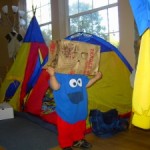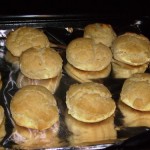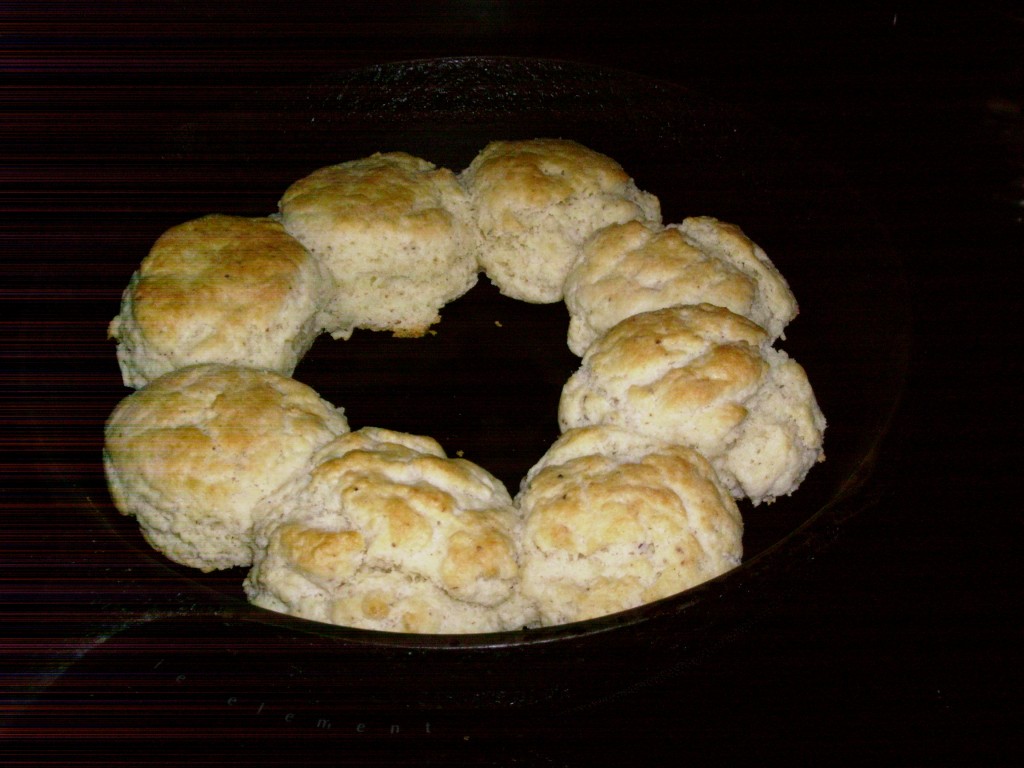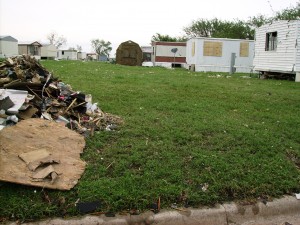How Everyday Storytelling Can Enhance Your Child’s Life – and Learning!
“Remember when you were little and we used to visit Eva across the street?” I reminisced with my daughter. “Eva ordered Girl Scout cookies from you, and when we went to deliver them, she insisted she never ordered any.”
My daughter laughed, then made a momentary sad-face.
We didn’t know at the time that Eva had Alzheimer’s. “Remember when she asked if you wanted a dish of ice cream? She went into the kitchen and came back without it,” I recalled.
Story is life. When we talk to our children about the events that happen to them Continue reading
Hungry Mom Kitchen Makes Flaky Gluten-Free Biscuits, Tassajara Style
After years of making delicious Tassajara Bread Book biscuits for my family, I needed to adapt the recipe for a gluten-free diet. Giving them up was not an option.
My second attempt was a triumph. But the third time was the charm! These babies have just the right texture. The crumb is light and buttery, yet holds together when sliced. There won’t be any left.
Flaky Gluten-Free Biscuits, Tassajara Style
INGREDIENTS
- 1 cup brown rice flour
- 1/2 cup potato starch (I used Bob’s Red Mill brand.)
- 1/2 cup glutinous rice flour (I used Arawan brand. This fine powdery flour is gluten free and sold at Asian markets, also called sweet rice flour.)
- 1/2 teaspoon xanthan gum (Sold at natural grocers.)
- 1 Tbs. ground almond meal (Optional. This ingredient adds light golden flecks and enhances flavor. Sold at natural grocers)
- 3 teaspoons baking powder
- 1/2 teaspoon salt
- 1/2 cup butter or margarine
- 2 eggs
- 1/3 cup milk
PREPARATION
Preheat the oven to 425⁰ F
1. Combine flours, almond meal (optional), and xanthan gum, baking powder and salt in food processor until pea-size pieces are formed. Transfer to large bowl. Or cut butter or margarine into dry ingredients with a pastry cutter or two knives.
2. Make a well in the center of dry ingredients and add the eggs and milk. Beat the eggs and milk with a fork until smooth. Continue stirring with the fork, gradually incorporating flour until it is all moistened.
3. Dust counter top with brown rice flour and turn out dough. Knead just enough to bring together. Use floured hands to shape into a rectangle. Fold in half, turn and repeat twice (The rolling and folding make a flakier biscuit.)
4. Gently shape dough into a 3/4-inch thickness. Do not use a rolling pin. Cut into rounds with a floured cutter or glass. Place on an ungreased preheated cast iron skillet or cookie sheet.
5. Brush with milk.
6. Bake at 425⁰ F for 10 minutes, until the bottoms are lightly browned and the tops golden. Do not overbake.
* BAKING TIP: For a crisper bottom, preheat a cast iron skillet for about 7 minutes before carefully transferring cut-out biscuits.
- Here is what the bag of Erawan Brand glutinous rice flour looks like. It’s also called “sweet rice flour.”

Cleaning Up After the Moore, Oklahoma, Tornado: It’s Like Putting a Band-Aid on a Train Wreck
I witnessed last Monday’s tornado in Moore, Oklahoma, from a safe distance – my mother-in-law’s apartment in Colorado Springs. We watched it happening live on the weather channel. Yesterday I went to volunteer in Moore with a church disaster team. They didn’t send us to the area hardest hit, but to a trailer park in a peripheral area. The EF-5 twister was on the ground for about 40 minutes and responsible for 24 deaths and more than 200 injuries. Thousands of homes were damaged or destroyed.
The trailer park were I worked with other volunteers that afternoon hadn’t felt the full force of the tornado’s 200 mile-an-hour winds. But it incurred enough damage to make the mobile homes uninhabitable. Windows were blown out and roofing and papers and pieces of people’s lives scattered everywhere.
Earlier, on my way to the work site, I had to drive past houses in the tornado’s path. Big houses on foundations. They looked like someone put had put them into a huge blender and pushed the “on” button. I got lost, and in the bumper-to-bumper traffic pulled off the road to ask a man in a construction-type trailer for directions. The parking lot had been taken over by some big company that clears disaster areas. The man was from Texas, and didn’t know where he was, either.
Utility trucks trying to restore power stuck out in traffic, narrowing the flow to one lane. National Guardsmen stood at side roads near barricades, keeping vehicles out. I called out to a guy getting back in his jeep. “Can I turn right at the next light?” I asked.
He said he thought I could. And I crept along, inching my way toward where I hoped I would find my volunteer group.
After I had checked in at the church and signed a release of liability, I finally got onto the right road. Again, traffic was going at a snail’s pace. A state trooper in a “Smokey” hat put his hand up. He was stopping every car, mine included. “Where you headed?”
I showed him my directions, and said I was turning off at a work site to volunteer.
“Good luck,” he said. But the tone in his voice told me, “Lady you have no idea.”
On the grassy area between the trailers I found a page from someone’s yearbook, a program from a play in which the people had ’70s hair styles. And puzzle pieces and lots and lots of insulation and tar paper. The roofing I picked up looked like kindling, or shredded sticks. A square of board about eight or ten inches penetrated the ground as though someone had hurled it and it stuck there, one corner facing up. It took two of us to wedge it loose.
At supper time, a local restaurant came around with boxed meals and drinks. One of the guys who hopped out of the car with the dinners told us how the previous night at sunset, the sky had glistened with glittery sparkles. Asbestos.
I felt like I was in a toxic waste dump.
Where were the people who had lived there? Did they get out in time?
They were all out of surgical masks when I got there, but I was lucky enough to have a piece of fabric in the back seat of my car – an old sheet I used to cover the back seat. I ripped it with my teeth to make a mouth and nose covering. When I took my white bandana off, a round, brown area indicated where my mouth had been.
I cleared an area smaller than my living room. It was like putting a band-aid on a train wreck. I only hope that volunteers keep coming, next week, and next month, until they get it all cleaned up.
And I hope that the people of this state, and everywhere along “tornado alley,” demand a plan: public tornado shelters, safe rooms, and safe places for all their children at school and daycare centers when it happens again. Because it probably will.
As soon as I got home I stripped out of my clothes. I threw everything in the washer and then took a hot shower. I can’t imagine what the victims are going through.
To My Dear Departed Hungarian Grandmother: Screw the Cabbage Rolls
I admit it. I am the granddaughter of garlic-growing, goulash-eating Hungarian grape farmers.
As I understand the story, after serving in the Austro-Hungarian cavalry during WWI, my grandfather threw some guy off a Cunard ocean liner in an attempt to escape the country.
In those days, you did what you had to do.
He entered the United States illegally through Canada, unlike my Hungarian grandmother, who he met some years later. After they married and had children, the INS threatened the poor gravedigger with deportation. He wrote a letter to FDR through a lawyer, pleading for amnesty for the sake of his children. Being a good Democrat, the President let him stay.
As soon as I came along, my grandmother taught me to say, “Don’t do that, you naughty boy,” in perfect Hungarian. And she taught me to cook – sour cream being one of the four basic food groups. One of her specialties was stuffed cabbage.
Stuffed cabbage, as you may know, can be a pain in the Hungarian derriere. It takes coring and steaming the whole cabbage for the perfect length of time in order to get the leaves just right for rolling. You don’t want them turning puke green. And then you have to pare down the vein of each leaf to make it pliable enough for rolling after adding the meat and rice mixture.
And finally, when everyone sits down to eat, what do they do? THEY CUT THE DAMN THINGS INTO LITTLE PIECES!!
I always wondered why I went to all the trouble.
Thus the reason for inventing stuffed cabbage soup. No time is wasted painstakingly rolling and tucking in those delicate cabbage leaves. The soup starts out in little pieces – the way it ends up in your stomach. Plus, it has far more fiber than the plain rice and meat mixture. I add carrots, green beans, onions, canned tomatoes, and herbs.
Who knows why the Hungarians make stuffed cabbage rolls. Maybe they were an early version of the sack lunch, so kids could take their meat and rice to school before Tupperware was invented.
Anyway, here’s my contribution to the legacy. No, there’s no recipe. It’s one of those dishes you just need to get a feel for. Maybe I’ll get to it one day. And so in honor of Mother’s Day: screw the stuffed cabbage, Grandmom. Have a glass of vodka. And may you rest in peace. FFG









